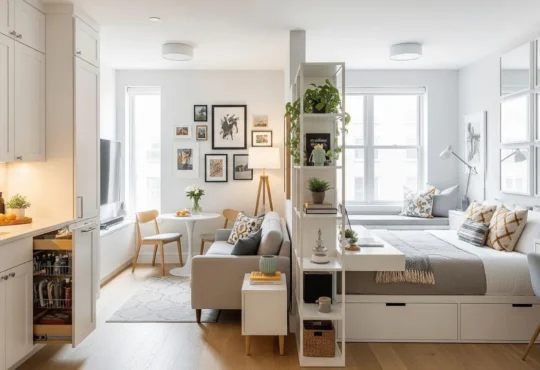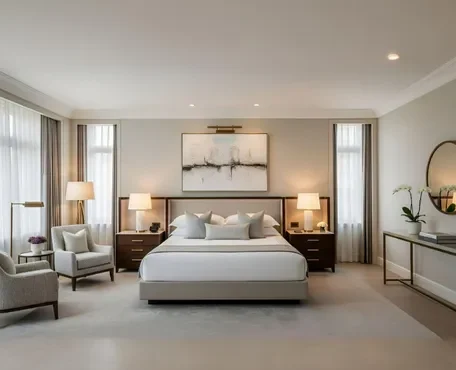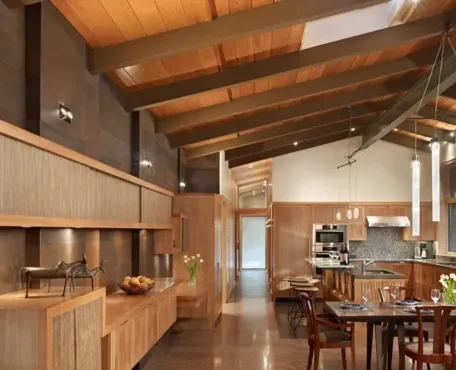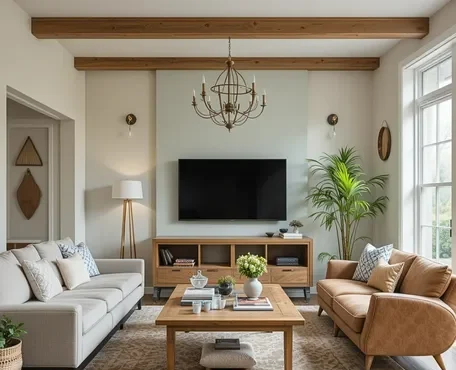
Letting go of possessions is more than a cleaning task — it’s an act of emotional renewal. We often hold on to items that once brought us comfort, memories, or a sense of identity. But when our homes become filled with things from the past, it can be hard to move forward. This guide invites you to see decluttering not as losing, but as gaining clarity, calm, and emotional freedom.
1. Understand Why You Hold On

Before decluttering, take a quiet moment to reflect. Why do certain items feel impossible to let go of?
For many people, possessions represent love, identity, or safety — not just objects. Understanding these attachments helps you make peace with releasing them. Try this exercise: hold an item and ask yourself — Does this still represent who I am today? If the answer is no, it’s time to thank it for its place in your story and let it go.
2. Start Small and Meaningful

Decluttering doesn’t have to happen overnight. Begin with one small area — a drawer, a shelf, or your nightstand. As you see progress, momentum builds naturally. Focus on completing one space fully instead of scattering your energy around the house. This builds confidence and a sense of achievement, motivating you to continue.
3. Keep the Memory, Not the Item

Often, it’s not the object we cherish, but the memory attached to it.
Take photos of sentimental items or create a digital “memory album.” This way, you honor the emotional connection without the physical clutter. You might also repurpose meaningful items — turn old letters into wall art, or transform fabric from loved ones into quilts or cushions. It’s about keeping the essence of the memory, not the excess.
4. Release Guilt and Fear

Letting go can stir guilt — What if I need this later? What if I’m being ungrateful?
But remember: objects are meant to serve you, not burden you. Keeping something out of guilt only creates emotional weight. Instead, shift your focus — think of your home as a reflection of your current self, not your past. Every item you release makes room for growth, creativity, and peace.
5. Donate with Purpose

Giving away possessions is one of the most healing parts of decluttering. When you donate something, you give it a second life — and someone else a chance to benefit from it. Knowing your belongings will serve another person brings comfort and turns letting go into an act of kindness rather than loss.
6. Redefine What “Enough” Means

In a world that celebrates more, minimalism can feel radical. But “enough” isn’t about having less — it’s about having what truly matters. When your home reflects your values instead of your possessions, you start to live intentionally. The result? More energy, space, and peace of mind.
7. Maintain a Clutter-Free Life

Decluttering is not a one-time event — it’s a practice. Set aside 10 minutes weekly to tidy small spaces, review your wardrobe seasonally, and check if new purchases genuinely add value. Consistency transforms minimalism from a trend into a mindful lifestyle.
8. Decluttering into Self-Discovery

Decluttering isn’t just about your home — it’s a mirror of your inner world. Notice which possessions you struggle to part with; they often reveal your values, fears, or hopes. Each decision teaches you something about who you are becoming. As you let go of what no longer serves you, you create space for emotional clarity, creativity, and personal growth. Decluttering becomes a mindful journey toward balance, purpose, and a more intentional life.
9. Write a Goodbye Note

If an object carries deep emotional value, try writing a short note of gratitude before letting it go. Express what it meant to you — and release it with love. This small ritual helps your heart accept the change. Acknowledging your connection turns decluttering into an act of healing. It honors your past while empowering you to embrace new experiences with clarity, peace, and self-compassion.
10. Use Mindfulness to Ease the Process

Before decluttering, take a few deep breaths and stay present. When you handle your possessions with awareness, you can distinguish between genuine appreciation and emotional attachment. Mindfulness turns the act of letting go into peaceful reflection. It helps you slow down, make thoughtful decisions, and reconnect with what truly adds value to your life — creating a calm, intentional environment that supports emotional well-being and clarity.
11. Set a “Memory Limit” Box

Create a small box where you keep only the most meaningful keepsakes — letters, photos, or trinkets. Limiting the space forces you to prioritize what truly matters and prevents emotional clutter from spreading again. This mindful boundary helps you cherish memories without feeling weighed down by the past, allowing your home and heart to stay open to new moments, growth, and emotional balance.
12. Decluttering as an Act of Self-Respect

Letting go isn’t a loss — it’s self-care. Choosing what belongs in your home is a declaration of self-worth and boundaries. You deserve a space that supports your growth, not one that holds you back. When you release clutter, you affirm your right to peace, clarity, and joy. Decluttering becomes a form of self-love — a conscious choice to honor who you are today and the life you’re creating tomorrow.
13. Embrace the 20/20 Rule

If you’re unsure about an item, ask: Can I replace it in 20 minutes for less than $20? If yes, you probably don’t need to keep it. This simple rule helps reduce hesitation and decision fatigue during decluttering. It encourages practical thinking, helping you focus on what truly adds value rather than what simply fills space. Over time, this mindset fosters freedom, efficiency, and a more intentional relationship with your belongings.
14. Try a “Possession Detox” Challenge

Pick one week where you commit to removing 5–10 unnecessary items per day. By the end of the week, you’ll have decluttered dozens of things — and built the habit of mindful letting go. This short, focused challenge helps you overcome procrastination, gain momentum, and experience the emotional lightness that comes from simplicity. It’s a powerful reset for both your space and your mindset.
15. Visualize Your Ideal Space

Close your eyes and picture how you want your home to feel — airy, calm, and full of light. Hold onto that vision as motivation. Every possession you release brings you closer to that peaceful image. Visualization strengthens your sense of purpose, guiding each decluttering choice with clarity. By focusing on how you want to feel, you transform your environment into a true reflection of balance, serenity, and intentional living.
16. Focus on Quality Over Quantity

Instead of owning many things that serve you halfway, invest in fewer possessions that bring real joy and function. Minimalism isn’t about deprivation — it’s about curating your life intentionally. Choosing quality over quantity helps you surround yourself with items that truly support your lifestyle and values. Each object earns its place, creating a home that feels purposeful, elegant, and aligned with who you are becoming.
17. Celebrate Each Step You Take

Every drawer emptied, every box donated, every moment of clarity — celebrate it. Acknowledging progress keeps the journey uplifting rather than stressful. You’re not just decluttering your home; you’re transforming your mindset. Each small victory reinforces your commitment to growth and self-care. By celebrating your efforts, you turn decluttering into a joyful, empowering practice that nurtures confidence, gratitude, and lasting motivation.
Conclusion
Letting go of possessions is a deeply personal journey — one that invites peace, clarity, and emotional freedom. As you release the things that no longer reflect who you are, you make room for what truly matters: memories, experiences, and a sense of calm that can’t be boxed or stored. Remember, decluttering isn’t about losing — it’s about choosing what deserves space in your life and heart.
Here are some frequently asked questions related to the article :
1. Why is it so hard to let go of possessions?
Because many items carry emotional meaning or memories. Letting go often feels like losing a part of your past, even when it’s just physical clutter.
2. How can I start decluttering my possessions without feeling overwhelmed?
Begin small — one drawer, one shelf, or one category at a time. Celebrate each step and focus on progress, not perfection.
3. What should I do with sentimental possessions I don’t want to keep?
You can take photos, create a memory box, or donate them to someone who will value them. This way, their meaning lives on without the clutter.
4. How do I know which possessions to keep or let go of?
Ask yourself: Does this add value or joy to my life right now? If not, it might be time to release it.
5. How can I declutter without feeling guilty?
Shift your mindset — releasing items doesn’t mean disrespecting memories. It means allowing yourself to move forward with peace.
6. How do I deal with family pressure to keep certain possessions?
Explain your intentions kindly. You can offer to pass items along or keep just one meaningful piece instead of many.
7. What are the emotional benefits of letting go of possessions?
You’ll feel lighter, calmer, and more focused. Decluttering often leads to emotional clarity, better energy, and a renewed sense of freedom.
The princess home on Pinterest










